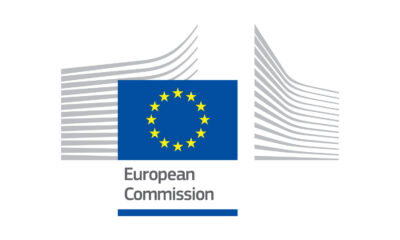Travel
Seat reservations on Spanish trains just got easier for Interrail and Eurail passholders
Interrail and Eurail passholders rejoice, as you can now skip the queues and reserve your seats on long- and medium-distance RENFE trains online.
Rail Europe, a European train booking platform, has expanded its offering to include trains operated by Spain’s state-owned railway, eliminating a major hurdle that has dogged rail passholders for years.
“The addition of RENFE’s passholder fares to our platform is a game-changer for travellers eager to explore Spain with ease,” says Jürgen Witte, Chief Product and Technology Officer of Rail Europe. “This enhancement ensures Interrail and Eurail Global Pass holders can navigate its world-class rail system seamlessly.”
With the new service, passholders can easily see if a seat reservation is required for their journey and what the associated costs will be.
From there, they can make their reservation online, eliminating the need for time-consuming in-person bookings where a lack of Spanish language skills is sometimes an issue.
What’s the problem with booking RENFE seats with a rail pass?
While many Interrail and Eurail trains don’t require seat reservations, Spanish high-speed trains – the Alta Velocidad Española (AVE) – do.
Although Interrail purports to allow bookings on some AVE trains via its self-service system, users report extensive issues in getting the platform to work. Some trains available on Interrail/Eurail are not bookable via the self-service system at all.
Previously, the only option to secure a seat reservation without buying a ticket on a RENFE high-speed train was to call the company. The traveller would then have to go to a RENFE station to pick up and pay for the reservation within 72 hours of booking, which is often not convenient.
“In Spain, almost all trains, apart from purely suburban ones, require a reservation, and RENFE’s own website doesn’t offer passholder reservations,” explains train travel expert Mark Smith, who runs the website The Man in Seat 61.
“Furthermore, Spanish trains can leave fully booked, so you ideally need to book ahead. This was a major issue for using an Interrail or Eurail pass in Spain.”
Smith warns that, particularly on peak travel days, such as Fridays and Saturdays in the summer months, queues can be atrocious. At major stations in Madrid and Barcelona, passengers can wait as long as one or two hours to be served.
The complexity has caused confusion and frustration among travellers. On the Eurail forum, one user said, “Not gonna jump through hoops to go to Spain. I’ll cancel the Spain leg and stay in France.”
How to book seat reservations with RENFE
To reserve a seat on a RENFE high-speed AVE train, simply head to the Rail Europe website.
Click ‘add rail pass’ below the journey planner and select the type and class of pass you hold. Then, you can search for a journey as normal, but you should only see the passholder reservation costs rather than the normal ticket costs.
Smith notes that the Rail Europe system defaults to a second-class reservation in the search results. Holders of first-class passes need to manually change the price drop-down if they want to reserve a first-class seat.
There are other options for booking seats on RENFE with a pass. These include using Dutch agency HappyRail, which has proven to be successful at booking seats on AVE trains, but charges a 3.5 per cent fee.
Interrail and Eurail reservation services have been available since 2023, but success is patchy. Smith notes that, when the systems do work, they allow booking in first or second class, but not in the ‘premium’ class that gets passholders Sala Club lounge access and a meal with wine included on AVE and Euromed trains.
Smith has long recommended Rail Europe as a booking service for Interrail and Eurail passholders, as it has more seat choices, more benefits for first-class passholders, and no booking fees.
“This is a big step forward,” says Smith, “and if one system won’t get you the reservation you want, try the other.”
Where can you travel with RENFE?
RENFE operates a comprehensive route network across Spain, with both its AVE (high-speed) and Larga Distancia (long-distance) trains. On the map below, the purple lines are AVE trains, and the grey lines are the slower long-distance routes.
As well as travelling within Spain, RENFE connects to several international destinations. These include Oporto in Portugal and several destinations in France.
From 23 April, RENFE will launch a new direct Seville-Barcelona train service, cutting out the transfer in Madrid and making it easier to get between the two popular cities.
Along the way, it stops in Córdoba, Puertollano, Ciudad Real, Madrid, Zaragoza, Lleida, Tarragona, and Girona, which are all attractive destinations to visit, too. The high-speed service takes around six hours and is set to make travel between the south and northeast of Spain a much more convenient option.
Travel
New competitors could slash Channel Tunnel rail fare by 30 per cent in the next 15 years
In the next 15 years, passengers on the Channel Tunnel rail line could triple, while fares could fall by almost a third.
These are the findings of a new report conducted by consultancy Steer and commissioned by London St Pancras Highspeed, owner of the tracks and station serving the Channel Tunnel.
The study forecasts a rise in passenger numbers from the current level of 11 million a year to 35 million by 2040.
This anticipated growth, along with increased competition on the route, could drive fares down by up to 30 per cent, the analysis concludes.
Plans are already in motion to double the international passenger capacity at St Pancras. At present, it supports up to 1,800 international passengers per hour, but the operator wants to see this increased to as many as 5,000 passengers an hour.
To facilitate this, London St Pancras Highspeed and Eurotunnel are collaborating to shorten journey times, improve timetable coordination and introduce more frequent services. Modifications to the station itself include reconfiguring existing spaces and constructing new facilities to cope with more passengers.
Why can we expect Channel Tunnel fares to decrease?
The 30 per cent fare reduction is projected to come as a result of increased competition and the growth in demand for rail travel through the Channel Tunnel.
Currently, Eurostar is the sole operator on the Channel Tunnel route. As with any business existing in a monopoly, fares and pricing in the absence of competition become artificially inflated.
With new operators vying to get their trains on the route, more options will stimulate competition, naturally driving down prices.
There are also the economies of scale to consider. The expected growth in demand could mean the overall cost per passenger for operators will decrease. Fixed costs of train operation can be spread across a larger number of passengers, allowing companies to price their fares a little lower.
Adding to the potential for cheaper cross-channel rail connections are new financial incentives introduced by London St. Pancras Highspeed.
Under the International Growth Incentive Scheme, new and existing operators on the HS1 line can unlock rebates of £1 (€1.17) per additional passenger carried, which will be paid into a joint fund for marketing and growing passenger demand.
New services can attract discounts on the fees for using the line of up to 50 per cent in year one, 40 per cent in year two and 30 per cent in year three.
The report leans heavily into the shift in consumer behaviour and the move towards more sustainable travel options. As the passenger base increases, operators will be able to offer lower fares and compete more fairly with budget airline options.
Which train operators are bringing the competition to the Channel Tunnel
The Channel Tunnel has been open to competitors since 2010, but the high costs of launching services and acquiring trains to run the route have deterred new operators from competing.
Recent regulatory changes and the launch of incentives have seen a newfound interest in cross-channel rail services, and several operators have already thrown their hats in the ring to operate services.
The Virgin Group has stated a desire to launch cross-channel train services by 2029. Discussions are already underway for a fleet of trains to operate the service.
Competing for access is a Spanish-led consortium known as Evolyn. The company wants to launch high-speed services between London and Paris and has indicated it has reached an agreement with Alstom to purchase 12 high-speed trains for the service.
Also in the mix is a start-up called Gemini Trains. led by Lord Tony Berkeley, a British aristocrat and former Eurotunnel engineer. Gemini has applied for an operator’s license to service Paris, Strasbourg, Cologne, and Geneva with a fleet of 10 trains by 2029.
Most recently, Italian state railway Ferrovie dello Stato Italiane has been revealed to be studying cross-channel services and is working with Evolyn towards this goal.
Other operators have previously expressed an interest in open access to the Channel Tunnel. Deutsche Bahn showcased a high-speed train at London’s St Pancras in 2010, signaling its intent to connect London with destinations in Germany, such as Frankfurt and Cologne. However, it has not yet officially joined the bidding war for services.
Where could you go via the Channel Tunnel, and when?
While discussions are still at early stages, the proposed new competitors on Channel Tunnel services could open direct rail connections to many more European cities from London.
Paris is a key destination and will provide direct competition with Eurostar. Ferrovie, Virgin Group and Evolyn have all mentioned Paris services in their communications to date.
As well as this, Virgin wants to connect London with Amsterdam and Brussels, while Getlink wants to run services directly to German and Swiss cities, including Frankfurt, Cologne, Geneva, Zurich, and Milan.
Most of the companies are targeting a launch between 2029-2030. However, Evolyn is aiming for a more ambitious 2026 start, though this timeline may prove optimistic given the challenges of entering the market.
From finding space for storage and maintenance of trains to money for the purchase of the equipment itself, the barriers to entry remain high.
Positive signals were received in early April when the UK’s Office of Road and Rail concluded that Eurostar must provide access to new operators at Temple Mills depot, a significant hurdle for any new operator. It also said the fees on the HS1 line were too high at €30 per mile – the most expensive in Europe.
Virgin Group declared this to be “a green signal for competition,” although Eurostar maintains Temple Mills is at capacity and can’t support even one new operator.
New trains in the Channel Tunnel will take time, but increased competition will undoubtedly serve to lower prices for the traveling public.
In addition to lower fares, increased competition could significantly reduce the carbon footprint of travel as more passengers opt for this low-emission option. High-speed rail can reduce CO2 emissions by up to 90 per cent compared to flying.
Travel
Barcelona to create special selfie zone to curb tourist chaos at Sagrada Familia
In front of Barcelona’s Sagrada Familia, gaggles of tourists pose for selfies. They crowd the pavement before the famous Gaudí-designed basilica and even step into the road for a better angle.
This quest for an Instagram-worthy photo comes at the expense of residents’ daily lives.
For over a decade, locals have lambasted the crowds of visitors that obstruct the passage of pedestrians and hold up traffic around the religious site.
Barcelona city authorities have now unveiled plans to corral selfie-snapping visitors into a dedicated area to ease the congestion.
As one of Spain’s hotspot destinations, it is the latest measure from officials to regulate tourism in the city.
Sagrada Familia selfie space will ‘reconcile tourists and the neighbourhood’
Barcelona city council has announced it will construct a special zone beside the Sagrada Familia where visitors can take a breather – and a selfie – before entering the church.
The 6,200-square-metre ‘anteroom’ will be located between the Nativity façade of the basilica and Plaça Gaudí on Carrer de la Marina.
Until recently, Plaça Gaudí had been exploited by tourists for a TikTok trend that caused considerable disruption.
It involved visitors balancing their phones on metro escalators to film themselves while the iconic monument appeared in the background. The trend led to tourists clogging station exits and was eventually banned.
“The new project helps to resolve a space where it is difficult to reconcile uses between visitors to the temple and the neighbourhood,” the city council said in a press release.
Construction on the gathering zone is scheduled to begin after the summer and be finished by April 2026 to coincide with the 100th anniversary of Gaudí’s death.
The €2.7 million project is part of a wider €15.5 million plan to improve infrastructure and visitor management around the sacred site.
The Sagrada Familia attracts 4.7 million visitors a year and is the second most visited site in Spain, after the Alhambra in Granada.
‘Tourism needs to be serving the city’s model’
Now drawing 32 million visitors a year, Barcelona has previously introduced several measures to curb overtourism.
In 2024, the city launched a €44 million plan to regulate crowds in 16 tourist hotspots by deploying more cleaners and police officers to maintain order and safety.
Last July, the city abandoned its ‘Visit Barcelona’ slogan of 15 years in favour of the new ‘This is Barcelona’, marking a rebranding which shifts the destination away from mass tourism.
Barcelona has also pledged to ban short-term apartment rentals to tourists by 2028 and cap cruise ship disembarkations.
Speaking after the announcement last year, the city’s mayor Jaume Collboni said the decision came in response to the risk of Barcelona becoming a “theme park” devoid of residents.
“Tourism needs to be serving the city’s model, not the opposite,” he added.
Travel
You’ll need to book via app to visit these spectacular beaches in Sardinia this summer
One beach on the Italian island of Sardinia will only be accessible to visitors by booking through an app this summer.
Crescent-shaped Tuerredda beach has already been capping visitor numbers at 1,100 per day since 2020.
The new digital measure, expected to be in place by July, aims to ease the strain on local resources and infrastructure.
Many of Sardinia’s spectacular beaches are protected from overtourism with similar restrictions, with transgressors facing fines of up to €3,500.
The island’s coastline is renowned for its pristine stretches of sand and is frequently voted as one of the top places in Italy for a seaside holiday.
But it has also been suffering due to disrespectful visitor behaviour and overcrowding.
Here are all the places where the island has limited access or introduced regulations to safeguard its most popular beaches.
Spiaggia Rosa: €3,500 for stealing sand
The Spiaggia Rosa, located on the outlying Budelli island, draws thousands of tourists a day in summer to admire its magnificent pink sand. But visitors can only see the picturesque sands from a distance on a boat.
Because of the beach’s fame, it has been closed off to visitors since the mid-1990s after its coveted sand began to disappear. The local government took action after tourists were found to be smuggling kilos worth away as souvenirs.
Local authority regulations now mean walking on the beach will land you a €500 fine, while anyone caught stealing the sand will have to pay up to €3,500.
La Maddalena, Cala Coticcio and Cala Brigantina are capping visitor numbers
In the archipelago of La Maddalena, two beaches now have restricted access. Last year, only 60 people a day could visit Cala Coticcio and Cala Brigantina over the summer.
Travellers needed to book their slot online and pay €3 per person to access the beaches with a guide.
The visitor limit and access fee have not yet been announced this year, but visits will likely need to be booked by contacting a local guide directly like last year.
Several other beaches around the island now only allow access to a limited number of visitors.
In the north, Cala Brandinchi and Lu Impostu will limit numbers to 1,447 and 3,352 respectively between 1 June and 30 September. Visitors also need to book via the San Teodoro app or on the dedicated website.
At Cala Mariolu, 700 people are allowed per day between June and early November.
In Villasimius in the southeast, beachgoers heading to Punta Molentis, Riu Trottu and Portu Sa Ruxi are required to pay to access the car park. Each vehicle costs €10 with an additional €1 for each passenger. Cyclists and pedestrians pay €3.
Staff are stationed at car parks and beach access points to check tickets.
Beach towels banned on Pelosa beach
On the west coast, Stintino’s famed Pelosa beach is now only open to a limited number of visitors per day. A maximum of 1,500 people are allowed to access the beach daily. Last year, visitor numbers reached as many as 4,000 on some days.
Those looking to sunbathe on Pelosa beach need to book a ticket costing €3.50. Regulations also state that visitors can only use beach towels if they place mats underneath them, which trap less sand.
Ogliastra: Time limits for beachgoers
In Ogliastra on the east coast, 300 people a day are permitted on Cala Birìala and beachgoers who arrive by boat can only stay for 90 minutes.
Similarly, visitors to Cala dei Gabbiani are also capped at 300. Last year, visitors had to leave after two hours.
How is Italy clamping down on overtourism?
Sardinia joins several other popular tourist destinations that have introduced restrictions as a result of overcrowding.
Venice now has a booking system and fee to visit the city. In the Italian Riviera town of Portofino, tourists lingering too long and blocking streets face fines of €270.
-

 EU & the World5 days ago
EU & the World5 days agoWho Is Buying TikTok? What Might Happen to the App
-

 Politics5 days ago
Politics5 days agoWinners of 2025 EU prize for women innovators announced
-

 Politics5 days ago
Politics5 days agoThe transformative power of AI
-

 Politics5 days ago
Politics5 days ago6 tips to spot and stop information manipulation
-

 Sports4 days ago
Sports4 days agoAlexander Zverev dates Jannik Sinner in Rome final
-

 Sports5 days ago
Sports5 days agoBundesliga 2024-2025: Heidenheim-Bayer Leverkusen, likely lineups
-

 Sports3 days ago
Sports3 days agoFederica Brignone, resignation date set: “Thank you all”
-

 Politics4 days ago
Politics4 days agoJapan: High Representative/Vice-President Kallas holds second EU-Japan Strategic Dialogue with Foreign Minister Takeshi Iwaya









